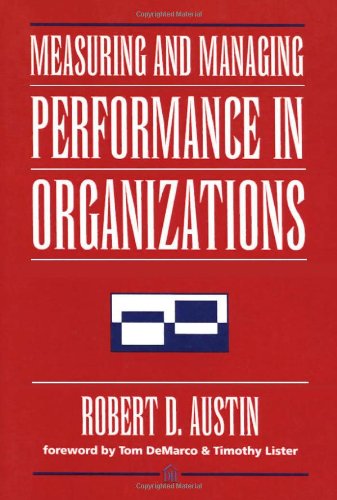Measuring and Managing Performance in Organizations. Robert D. Austin.
, Marblehead, MABe careful what you measure.
Some books on measurement so strongly advocate its use that they look almost exclusively at success stories. They profess to tell you how to get it right, but they supply little or no detail about the consequences or likelihood of getting it wrong.

Robert D. Austin’s Measuring and Managing Performance in Organizations describes a carefully constructed model, uses the model to define incentive distortion and measurement dysfunction, and makes a case that in scenarios where you can’t measure every important dimension distortion is inevitable and the risk of outright dysfunction is high.
The model defines a best mix of worker activities at any given level of effort, and a best mix path that plots the mix of activities at each level of effort that produces the greatest value.
Incentive distortion results whenever measurement incents workers to deviate from the best mix path.
It’s possible to distort incentives without doing damage. Measurement that incents employees to work harder can produce more value for each additional unit of effort even if the measurement simultaneously incents employees to deviate from the best mix path.
Dysfunction results when measurement incents employees to allocate additional effort in ways that actually reduce the value they produce relative to lower levels of effort.
Austin argues that the practicality of measuring every important dimension of a given job is not a choice that a manager can make. Instead it’s a characteristic of the job.
Complex jobs don’t lend themselves to full supervision. There tend to be dimensions of the work that are difficult, impossible, or cost prohibitive to measure.
That leaves managers with a choice between partial supervision and leveraging employees’ internal motivation with “delegatory management”.
He cites evidence that external motivation crowds out internal motivation, making it difficult to combine motivational measurement with delegation without producing distortion or dysfunction.
Teams can, however, use informational measurement to their advantage with delegatory management, as long as they can avoid the pitfall of measures being used for motivational purposes.
See also, quotes from the book.